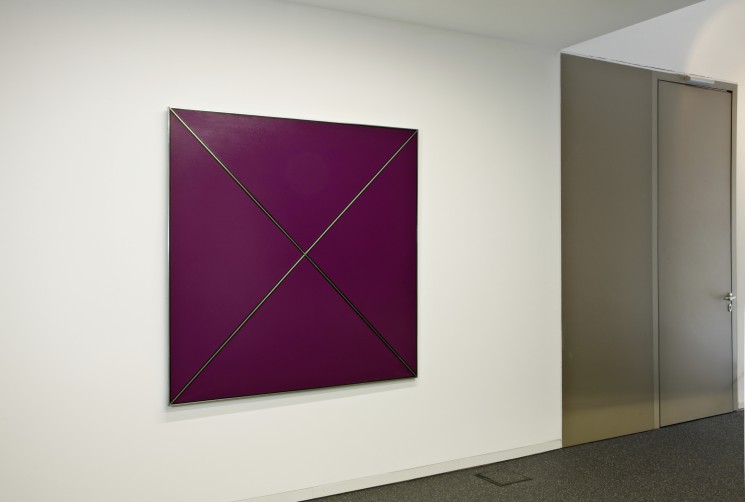Tadaaki Kuwayama A visit to his studio in New York

Tadaaki Kuwayama welcomes you to his generously proportioned loft in New York with a laugh. He lives and works here with his wife, the artist Rabuko Naito. Despite his advanced years, he appears astonishingly youthful. You do not realise he is 83 years old.
The studio is in the middle of the Chelsea gallery district in downtown Manhattan. When he moved there decades ago, Chelsea was not yet the centre of the blue chip galleries and the playing field of the real estate bosses who build one luxury apartment skyscraper after another.
Kuwayama on the other hand seems like a relic from another era. He is one of a generation of artists who stand for yesterday’s New York, the city of the 1960s and 1970s. When downtown Manhattan was still a dangerous place and artists could still afford to have their studios there. The home of many artists who are today known all over the world, like Andy Warhol and Jackson Pollock.
A group of artists known today under the term “minimal art” were also part of this New York sub-culture. Dan Flavin, Walter de Maria, Donald Judd. And Kuwayama. They totally rejected the artistic signature, used industrially prepared materials and a reduced design vocabulary. A rejection of everything known until then and a radically new start. In 1966, Salomon R. Guggenheim exhibited this new movement for the first time in the “Systemic Painting” exhibition.
Today Kuwayama is mainly known in Asia, in his home country of Japan. Less so in Europe or the USA. By now, his works are also being produced there. All the American workshops for his technically challenging and sensitive works no longer exist.
If you look around his studio, you can see works from his various creative phases everywhere. Early works on canvas, monochrome, subdivided by horizontal or vertical metal strips. His later wall installations and floor works, titanium cubes and cylinders, arranged in series, shimmering in green, red, yellow or silver. The individual works are only differentiated by delicate nuances of colour. Sketches for exhibition projects lie on the long table in the middle of the studio. On the shelves is every possible variation of paints and pigments. His studio is well-organised and clear, just like his works.
Kuwayama points to a serial work on the wall. A real estate tycoon wanted to buy it, for the lobby of his newest skyscraper in the financial district. He laughs again as he tells the story. The exceedingly rich collector wanted to negotiate the price down to a fraction of its value. Kuwayama said no, and so the purchase was turned into a loan. That’s OK too, he says. His next exhibition will be in London, together with Carl Andre, also a colleague from the old days and a fellow-founder of minimal art. That pleases Kuwayama far more.